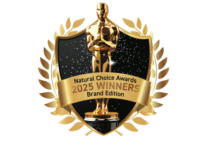In 2023, the U.S. organic foods market was valued at nearly $64 billion USD. This type of growth has led to a rise in the development of organic schemes, particularly in North America, according to Ecovia Intelligence, the London-based specialist research, consulting, and training company focusing on global organic & sustainable product industries.
Since 2000, U.S. consumers have been able to identify organic products by their assigned USDA organic seal. Fast forward 25 years and organic producers have started selecting higher standards as a baseline for their products, alternatives like the USDA National Organic Program (NOP). This same trend holds true for the global organic industry, in Europe's largest organic food market, Germany, the EU Organic logo, which is protected by government regulations, is added to organic products in addition to logos from Naturland, Bioland, Bio-Siegel (German label for organic products) and similar organizations.
Setting the New Standard
One of the organic schemes that has seen a rise in popularity amongst organic industry members is the Regenerative Organic Certification (ROC). To date, almost 300 farms and 61,104 smallholder farms managing 18.4 million acres of land, as well as 223 brands including Nature's Path, Alter Eco, Bonterra Vineyards, and Lundberg Family Farms, have adopted the standard since its inception five years ago. The standard, which highlights three pillars: soil health, animal welfare, and social fairness, has also been adopted internationally by Aliet Green (Indonesia), Big Tree Farms (Indonesia), Daabon (Colombia), Native (Brazil), Serendipol (Sri Lanka) and EcoFarms India.
Another standard seeing widening support amongst organic producers is The Real Organic Project. This scheme goes beyond the USDA NOP standard, covering organic foods that is soil grown and pasture raised. Over 1,000 organic farmers have opted for the farmer-led grassroots movement standard which got its beginnings in Vermont in 2018.
The Problem is...
In Europe, consumers are no strangers to organic products with more than one organic label. France has adopted the Agriculture Biologique (AB) label, Denmark has the Ø label, and in Germany, the Bavaria state launched the regional organic label: Bayerisches Bio-Siegel in 2015. This lack of a single international organic standard has created an unfavorable situation for producers of agricultural commodities in areas like the southern hemisphere. While Brazil, India, Japan, and China all have their own national logos for organic products, the absence of a strong organic sector in areas like Asia and Africa has led many of its producers to adopt European and/or American organic agricultural standards for their products. For an organic tea producer in India this lack of a globally recognized standard means they would have to adopt several organic standards (EU, USDA, JAS, Indian Organic, etc.) depending on the number of export markets it does business with.
The Summit
The upcoming Sustainable Foods Summit, taking place in San Francisco from January 22 - 23, presents the perfect opportunity for industry members to address the current and future issues impacting the sector. Representatives from the Organic Trade Association, Regenerative Organic Alliance, The Real Organic Project, Rodale Institute, and Ciranda will be participating in a dedicated panel on organic labelling. Participants will discuss pressing questions affecting the future of the industry including:
- What labelling schemes are gaining popularity?
- Will there be more voluntary standards and / or more national logos?
- What impact will the growing number of organic equivalency agreements have on labels?
- Will consumers be able to distinguish between the growing number of organic labels?
- How can the global organic food industry prevent fragmentation in terms of standards and labels?
The event will also address challenges such as how the growing number of organic labels in the global organic food industry raises questions amongst consumers about the future: Why does one product possess a single standard stamp while another item features multiple standards logos? Which standard supersedes the others? With so much industry growth, experts will address the need for uniformity.
Related: Sustainable Foods Summit Heads to San Francisco
Circana Weighs Impact of GLP-1 on Consumer Spending










